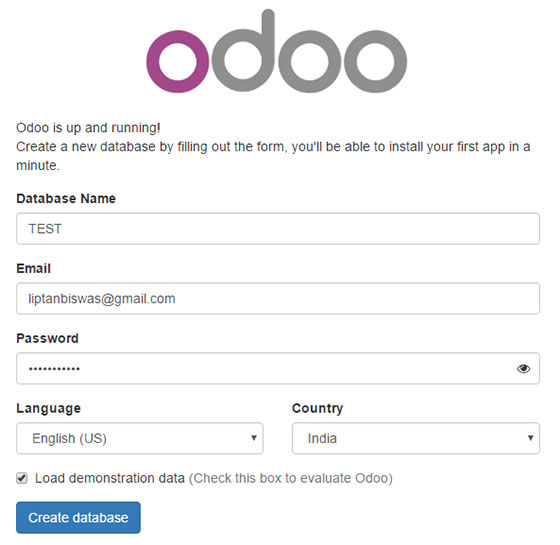How To Install Odoo on Fedora 40

Odoo is a powerful and versatile suite of business applications that has revolutionized the way organizations manage their operations. From customer relationship management (CRM) to e-commerce, billing, accounting, manufacturing, warehouse management, project management, and inventory control, Odoo offers a comprehensive solution for businesses of all sizes.
Fedora 40, the latest release of the popular Linux distribution, provides an excellent platform for hosting Odoo. Known for its stability, security, and cutting-edge features, Fedora 40 offers an ideal environment for running Odoo efficiently and securely.
This guide aims to walk you through the process of installing Odoo on Fedora 40, step by step. Whether you’re a small business owner looking to streamline your operations or an IT professional tasked with setting up Odoo for your organization, this tutorial will provide you with the knowledge and tools necessary to get Odoo up and running on your Fedora 40 system.
Prerequisites
Before we dive into the installation process, it’s crucial to ensure that your system meets the necessary requirements and that you have all the essential components in place. Here’s what you’ll need:
System Requirements
- CPU: A multi-core processor (2 cores minimum, 4 cores recommended)
- RAM: At least 4GB of RAM (8GB or more recommended for optimal performance)
- Storage: Minimum 20GB of free disk space (SSD storage is preferred for better performance)
- Network: A stable internet connection for downloading packages and updates
Software Dependencies
Odoo relies on several software packages and libraries to function correctly. We’ll be installing these dependencies as part of the process, but it’s good to be aware of them:
- Python 3 (Fedora 40 comes with Python 3 pre-installed)
- PostgreSQL (as the database backend)
- Various development tools and libraries
PostgreSQL: The Backbone of Odoo
PostgreSQL serves as the database management system for Odoo. It’s chosen for its reliability, performance, and robust feature set, making it an ideal match for Odoo’s requirements. We’ll be setting up PostgreSQL as part of this installation guide.
Now that we’ve covered the prerequisites, let’s move on to the installation process.
Step 1: Updating System Packages
Before we begin the installation of Odoo, it’s crucial to ensure that your Fedora 40 system is up to date. This step helps prevent potential conflicts and ensures that you have the latest security patches and software versions.
Open your terminal and run the following command:
sudo dnf update -yThis command updates all installed packages on your system to their latest versions. The `-y` flag automatically answers “yes” to any prompts, streamlining the update process.
Keeping your system updated is not just a prerequisite for installing Odoo; it’s a good practice for maintaining the overall health and security of your Fedora 40 system. Regular updates help protect against vulnerabilities and ensure compatibility with new software installations.
Step 2: Installing Dependencies
Odoo requires several dependencies to function correctly. In this step, we’ll install these essential components using Fedora’s package manager, DNF.
Run the following command to install the necessary dependencies:
sudo dnf install -y git python3-pip python3-devel python3-setuptools python3-wheel libxml2-devel libxslt-devel openssl-devel libpq-devel libjpeg-devel zlib-devel gcc redhat-rpm-configLet’s break down these dependencies:
- git: Version control system used for downloading Odoo source code
- python3-pip: Python package installer
- python3-devel: Python development files
- python3-setuptools and python3-wheel: Tools for installing Python packages
- libxml2-devel and libxslt-devel: XML and XSLT processing libraries
- openssl-devel: OpenSSL development files for secure connections
- libpq-devel: PostgreSQL development files
- libjpeg-devel and zlib-devel: Image processing libraries
- gcc: GNU Compiler Collection for compiling certain Python packages
- redhat-rpm-config: Red Hat RPM configuration files
These dependencies provide the necessary libraries and tools for Odoo to run efficiently on your Fedora 40 system.
Step 3: Setting Up PostgreSQL
PostgreSQL is the preferred database management system for Odoo due to its robustness and performance. Let’s install and configure PostgreSQL for use with Odoo.
Installing PostgreSQL
Install PostgreSQL using the following command:
sudo dnf install -y postgresql postgresql-server postgresql-contribInitializing and Starting PostgreSQL
After installation, we need to initialize the database and start the PostgreSQL service:
sudo postgresql-setup --initdb
sudo systemctl enable postgresql
sudo systemctl start postgresqlThese commands initialize the database, enable PostgreSQL to start at boot, and start the PostgreSQL service immediately.
Creating a Database User for Odoo
Now, let’s create a dedicated PostgreSQL user for Odoo:
sudo -u postgres createuser -s odooThis command creates a PostgreSQL user named “odoo” with superuser privileges, which Odoo will use to interact with the database.
Step 4: Installing Odoo
With our dependencies in place and PostgreSQL set up, we’re ready to install Odoo itself. We’ll be using the official Odoo repository to ensure we get the most up-to-date and stable version.
Downloading Odoo
First, let’s create a directory for Odoo and clone the official repository:
sudo mkdir /opt/odoo
sudo git clone https://www.github.com/odoo/odoo --depth 1 --branch 15.0 /opt/odoo/odooThis command creates an `/opt/odoo` directory and clones the Odoo 15.0 branch into it. The `--depth 1` option ensures we only download the most recent commit, saving time and disk space.
Installing Python Dependencies
Next, we’ll install the Python packages required by Odoo:
sudo pip3 install -r /opt/odoo/odoo/requirements.txtThis command installs all the Python packages listed in Odoo’s requirements file.
Creating an Odoo User
For security reasons, it’s best to run Odoo under a dedicated user account. Let’s create one:
sudo useradd -m -d /opt/odoo -U -r -s /bin/bash odooThis command creates a system user named “odoo” with a home directory at `/opt/odoo`.
Setting Permissions
Now, let’s set the correct ownership and permissions for the Odoo directory:
sudo chown -R odoo:odoo /opt/odooStep 5: Configuring Odoo
With Odoo installed, we need to create a configuration file to control its behavior.
Creating the Configuration File
Create and edit the Odoo configuration file:
sudo mkdir /etc/odoo
sudo nano /etc/odoo/odoo.confAdd the following content to the file:
[options]
; This is the password that allows database operations:
admin_passwd = my_admin_passwd
db_host = False
db_port = False
db_user = odoo
db_password = False
addons_path = /opt/odoo/odoo/addons
logfile = /var/log/odoo/odoo-server.logReplace `my_admin_passwd` with a strong password of your choice. This password will be used for database management operations.
Creating Log Directory
Create a directory for Odoo logs:
sudo mkdir /var/log/odoo
sudo chown odoo:odoo /var/log/odooStep 6: Creating a Systemd Service
To ensure Odoo starts automatically with your system and can be easily managed, we’ll create a systemd service file.
Create and edit the service file:
sudo nano /etc/systemd/system/odoo.serviceAdd the following content:
[Unit]
Description=Odoo
Requires=postgresql.service
After=network.target postgresql.service
[Service]
Type=simple
SyslogIdentifier=odoo
PermissionsStartOnly=true
User=odoo
Group=odoo
ExecStart=/opt/odoo/odoo/odoo-bin -c /etc/odoo/odoo.conf
StandardOutput=journal+console
[Install]
WantedBy=multi-user.targetThis service file ensures that Odoo starts after the network and PostgreSQL services are available.
Now, let’s enable and start the Odoo service:
sudo systemctl enable odoo
sudo systemctl start odooStep 7: Testing the Installation
With all the steps completed, it’s time to verify that Odoo is running correctly.
Accessing the Odoo Interface
Open your web browser and navigate to:
http://localhost:8069
If you’re accessing Odoo from a different machine, replace “localhost” with your server’s IP address.
Initial Setup
You should see the Odoo database creation screen. Follow these steps:
- Enter a name for your database
- Choose the default language
- Create a strong password for the admin account
- Click “Create database”

Once the database is created, you’ll be taken to the Odoo dashboard, where you can start exploring its features and installing the modules you need.
Congratulations! You have successfully installed Odoo. Thanks for using this tutorial for installing the Odoo open source ERP and CRM on Fedora 40 system. For additional help or useful information, we recommend you check the official Odoo website.